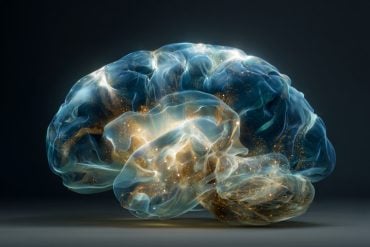Antibiotics may be linked to a serious disruption in brain function, called delirium, and other brain problems, more than previously thought, according to a “Views and Reviews” article published in the Feb. 17, 2016, online issue of Neurology.
Delirium causes mental confusion that may be accompanied by hallucinations and agitation. Medications are often the cause of delirium, but antibiotics are not necessarily the first medications doctors may suspect.
“People who have delirium are more likely to have other complications, go into a nursing home instead of going home after being in the hospital and are more likely to die than people who do not develop delirium,” said author Shamik Bhattacharyya, MD, of Harvard Medical School and Brigham and Women’s Hospital in Boston, Mass., and a member of the American Academy of Neurology. “Any efforts we can make to help identify the cause of delirium have the potential to be greatly beneficial.”
For the study, researchers reviewed all available scientific reports and found case reports on 391 patients, over seven decades, who were given antibiotics and later developed delirium and other brain problems. A total of 54 different antibiotics were involved, from 12 different classes of antibiotics ranging from commonly used antibiotics such as sulfonamides and ciprofloxacin to intravenous antibiotics such as cefepime and penicillin.
About 47 percent had delusions or hallucinations, 14 percent had seizures, 15 percent had involuntary muscle twitching and 5 percent had loss of control of body movements. Plus, EEG, a test that detects electrical activity in the brain, was abnormal in 70 percent of the cases. 25 percent of the people who developed delirium had kidney failure.
The researchers identified three types of delirium and other brain problems related to antibiotics.
Type 1 was characterized by seizures and most often associated with penicillin and cephalosporins. Type 2 was marked by symptoms of psychosis and associated with procaine penicillin, sulfonamides, fluoroquinolones and macrolides. Both Type 1 and Type 2 had a quick onset of symptoms, within days. Once antibiotics were stopped, symptoms also stopped within days.
Type 3 was characterized by abnormal brain scans and impaired muscle coordination and other signs of brain dysfunction, and was only associated with the drug metronidazole. The beginning of noticeable symptoms took weeks instead of days. Symptoms also took longer to go away once the antibiotic was stopped.

Bhattacharyya noted that all of the patients had an active infection that could not be ruled out as the cause of the delirium and other brain problems. A scale used to determine whether side effects can be attributed to a drug found that the association was possible in most cases. When infections that affected the central nervous system were not included, the association was probable.
“More research is needed, but these antibiotics should be considered as a possible cause of delirium,” said Bhattacharyya. “Recognition of different patterns of toxicity could lead to a quicker diagnosis and hopefully prevent of some of the negative consequences for people with delirium and other brain problems.”
Source: Rachel Seroka – AAN
Image Source: The image is in the public domain
Original Research: Abstract for “Antibiotic-associated encephalopathy” by Shamik Bhattacharyya, R. Ryan Darby, Pooja Raibagkar, L. Nicolas Gonzalez Castro, and Aaron L. Berkowitz in Neurology. Published online February 17 2016 doi:10.1212/WNL.0000000000002455
Abstract
Antibiotic-associated encephalopathy
Delirium is a common and costly complication of hospitalization. Although medications are a known cause of delirium, antibiotics are an underrecognized class of medications associated with delirium. In this article, we comprehensively review the clinical, radiologic, and electrophysiologic features of antibiotic-associated encephalopathy (AAE). AAE can be divided into 3 unique clinical phenotypes: encephalopathy commonly accompanied by seizures or myoclonus arising within days after antibiotic administration (caused by cephalosporins and penicillin); encephalopathy characterized by psychosis arising within days of antibiotic administration (caused by quinolones, macrolides, and procaine penicillin); and encephalopathy accompanied by cerebellar signs and MRI abnormalities emerging weeks after initiation of antibiotics (caused by metronidazole). We correlate these 3 clinical phenotypes with underlying pathophysiologic mechanisms of antibiotic neurotoxicity. Familiarity with these types of antibiotic toxicity can improve timely diagnosis of AAE and prompt antibiotic discontinuation, reducing the time patients spend in the delirious state.
“Antibiotic-associated encephalopathy” by Shamik Bhattacharyya, R. Ryan Darby, Pooja Raibagkar, L. Nicolas Gonzalez Castro, and Aaron L. Berkowitz in Neurology. Published online February 17 2016 doi:10.1212/WNL.0000000000002455







